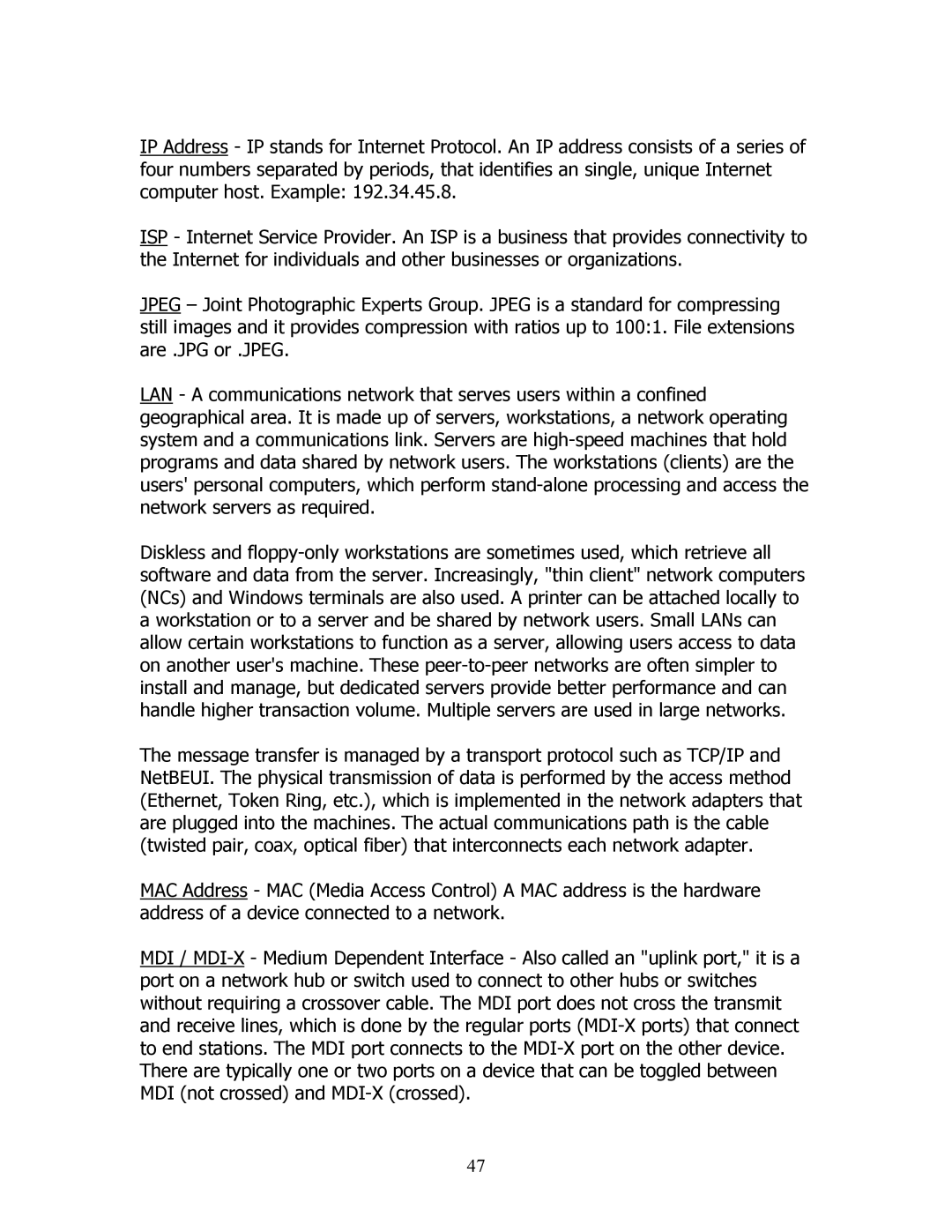IP Address - IP stands for Internet Protocol. An IP address consists of a series of four numbers separated by periods, that identifies an single, unique Internet computer host. Example: 192.34.45.8.
ISP - Internet Service Provider. An ISP is a business that provides connectivity to the Internet for individuals and other businesses or organizations.
JPEG – Joint Photographic Experts Group. JPEG is a standard for compressing still images and it provides compression with ratios up to 100:1. File extensions are .JPG or .JPEG.
LAN - A communications network that serves users within a confined geographical area. It is made up of servers, workstations, a network operating system and a communications link. Servers are high-speed machines that hold programs and data shared by network users. The workstations (clients) are the users' personal computers, which perform stand-alone processing and access the network servers as required.
Diskless and floppy-only workstations are sometimes used, which retrieve all software and data from the server. Increasingly, "thin client" network computers (NCs) and Windows terminals are also used. A printer can be attached locally to a workstation or to a server and be shared by network users. Small LANs can allow certain workstations to function as a server, allowing users access to data on another user's machine. These peer-to-peer networks are often simpler to install and manage, but dedicated servers provide better performance and can handle higher transaction volume. Multiple servers are used in large networks.
The message transfer is managed by a transport protocol such as TCP/IP and NetBEUI. The physical transmission of data is performed by the access method (Ethernet, Token Ring, etc.), which is implemented in the network adapters that are plugged into the machines. The actual communications path is the cable (twisted pair, coax, optical fiber) that interconnects each network adapter.
MAC Address - MAC (Media Access Control) A MAC address is the hardware address of a device connected to a network.
MDI / MDI-X - Medium Dependent Interface - Also called an "uplink port," it is a port on a network hub or switch used to connect to other hubs or switches without requiring a crossover cable. The MDI port does not cross the transmit and receive lines, which is done by the regular ports (MDI-X ports) that connect to end stations. The MDI port connects to the MDI-X port on the other device. There are typically one or two ports on a device that can be toggled between MDI (not crossed) and MDI-X (crossed).
47
